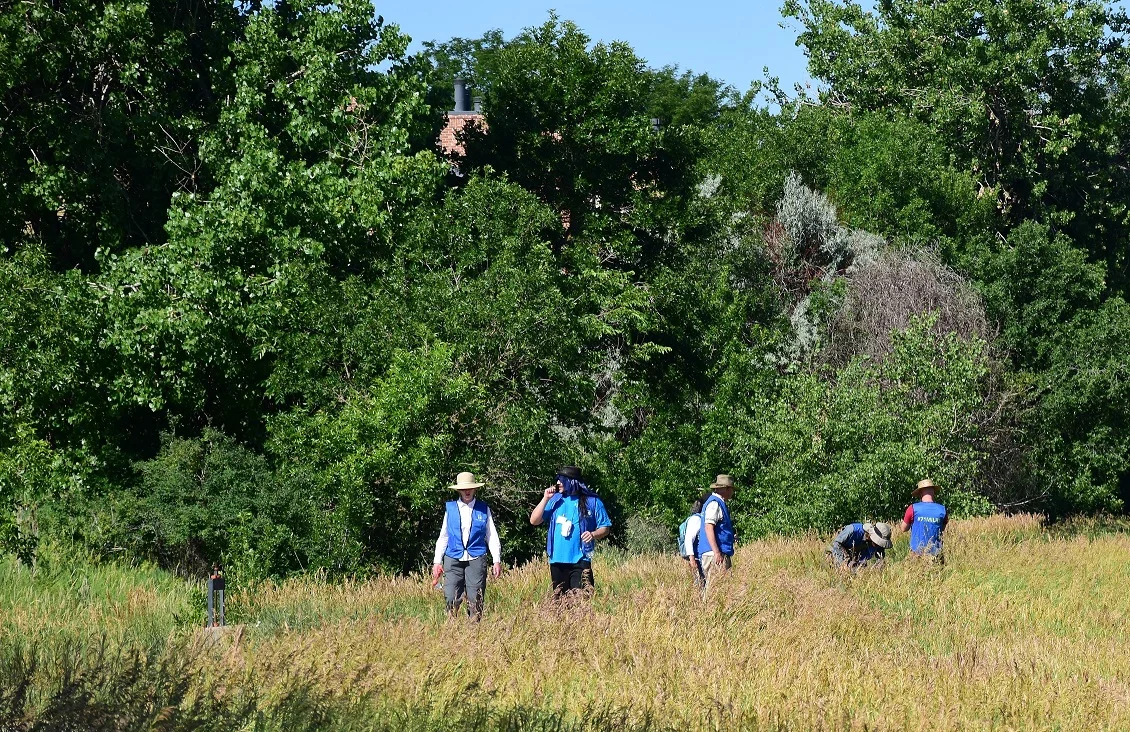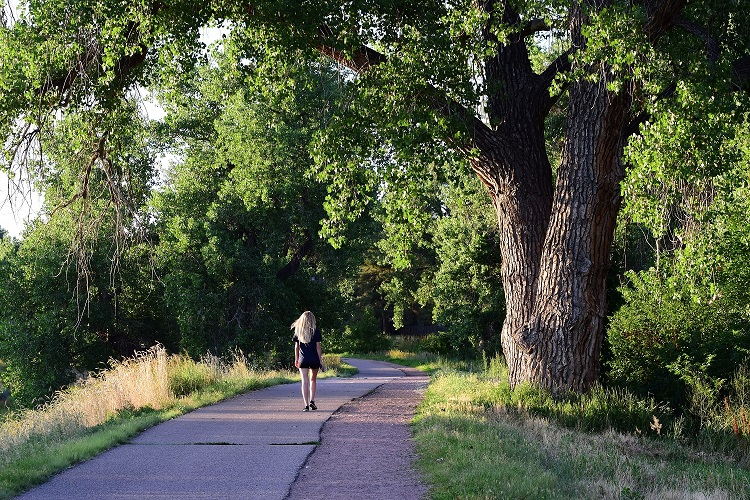Similar to any big city, there are very few places left in Denver that allow residents to escape the stress of busy life and reconnect with nature almost at their doorsteps. Meandering through myriad of shrubs, forbs, grasses, wildflowers and trees from foothills in the southwest to plains in the northeast, a 71-mile long stretch of the Highline Canal is one of the longest green ways in the United States. It is a truly rich and unique stretch of nature that is available not only to all the Denverites but also to a great diversity of plant and animal life.
The Canal plays a critical role in the social infrastructure of the city as it weaves through countless neighborhoods, connecting thousands of acres of adjacent parks, open spaces, and conservation areas, and invites 350,000 residents that live within a mile of the Canal to explore its recreational uses. I personally enjoy walking among tall grasses and giant cottonwood trees, biking its path while gazing at sunsets over the Rocky Mountains in the thick air of the evening,or catching rare glimpses of owls, hawks, and raccoon families taking refuge in the trees.
The ecological role of the Canal is profoundly as important. The Canal provides many essential ecosystem services (nature’s benefits) including water filtration, flood and erosion control, and mitigation of urban heat island effect especially in developed areas of the city dominated by impervious surfaces such as roads, buildings, and parking lots. When the Canal was completed by settlers in 1883 who needed to move water from mountains to plains for their crops and livestock, it started attracting people, animals, and plants from surrounding semi-arid grasslands providing a unique habitat for all.
As the Canal started evolving from native ecosystems to different land uses, its vegetation started to change drastically, creating space for diversity of native as well as non-native plants. Biodiversity is fundamental for the functioning of ecosystems,provision of ecosystem services and safeguarding against human disturbances and environmental change. The Canal runs through several ecological zones and is a host to much greater biodiversity than adjacent developed or developing urban areas. To ensure protection and conservation of this vast ecological resource going forward, the Denver Botanic Gardens teamed up with the High Line Canal Conservancy to conduct a full botanical survey along the entire length of the Canal. The findings of the survey were published by the Conservancy to help inform appropriate land management decisions.
In the summer of 2018, Denver Botanic Gardens’ researchers, scientists and botanists documented a species-level diversity. To involve many citizen science-volunteers, Denver Botanic Gardens and the Conservancy hosted a series of Bioblitzesat parks along the Canal. Participants had to use iNaturalist (a global biodiversity tool) to help Denver Botanic Gardens staff observe and identify many unknown plant species. During just one Bioblitz, a team of volunteers and staff made over 300 observations of about 96 plant species. Buffalo gourd was a memorable finding, while showy plants like milkweeds, great mulleins, burdocks, thistles, and wheat grasses were ubiquitous. In general, the survey identified nearly 450 plant species of which a large number is represented by native species. Unexpectedly, a few uncommon native species were found such as the blue ridge carrion-flower that can only be found in 7 counties of Colorado.The Conservancy is also hosting clean up and noxious weed removal days helping maintain naturalness and reducing disturbance to native species.
Article By Earth Restoration Service Blog Writer Tatiana Bogdanova












